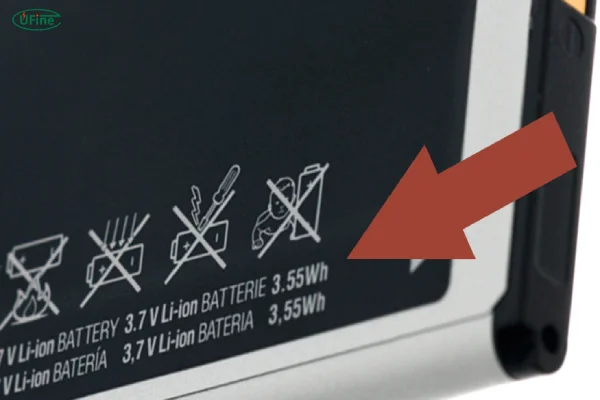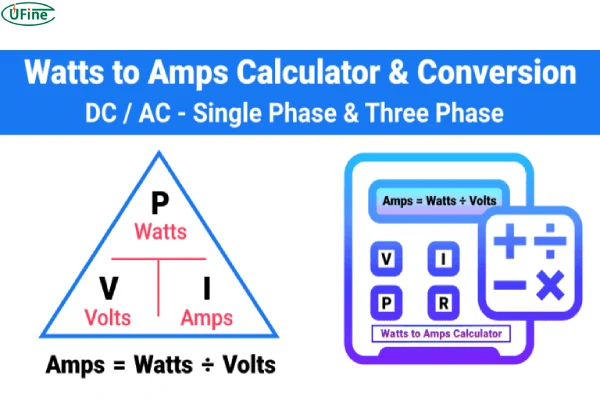In the world of electricity, watts are the key to understanding power. They represent the rate at which energy is used or produced, dictating how much work an electrical device can do in a given time. Whether you’re trying to size a battery for your RV, calculate the energy consumption of your home appliances, or simply understand your electricity bill, knowing how to calculate watts is essential. This comprehensive guide will delve into the world of watts, exploring their meaning, the different ways to calculate them, and the relationship between watts, volts, and amps.
Part 1. What is the Watt?
Watts (W) are the units of power, a fundamental concept in understanding how electricity works. Think of watts as a measure of how much “work” an electrical device can do. The more watts a device uses, the more energy it consumes and the more work it can perform.
The Relationship Between Watts, Volts, and Amps:
To understand watts, we need to grasp the relationship between volts, amps, and power.
- Volts (V): Volts represent the electrical pressure that drives the flow of electricity. Imagine volts as the pressure of water pushing through a pipe. Higher voltage means more electrical pressure.
- Amps (A): Amps measure the amount of electrical current flowing through a circuit. Think of amps as the volume of water flowing through a pipe. Higher amperage means more current flowing.
- Watts (W): Watts represent the power, the rate at which energy is used or produced. It’s the combination of voltage and current.
Part 2. W and Wh: What’s the difference?
-
Watt (W):
- Definition: A unit of power, representing the rate at which energy is transferred or used.
- Analogy: Imagine a water hose. Water flow rate is like power. A higher flow rate means more water per second.
- Examples:
- A 60-watt light bulb consumes 60 watts of power when turned on.
- An appliance might have a power rating of 1500 watts.
- A 60-watt light bulb consumes 60 watts of power when turned on.
- Definition: A unit of power, representing the rate at which energy is transferred or used.
-
Watt-hour (Wh):
- Definition: A unit of energy, representing the amount of energy consumed over time.
- Analogy: Imagine the total amount of water that flows through the hose over a certain period.
- Examples:
- If a 60-watt light bulb is left on for 10 hours, it consumes 600 watt-hours (Wh) of energy.
- Battery capacities are often measured in watt-hours (e.g., a 12V, 10Ah battery has a capacity of 120 Wh).
- Definition: A unit of energy, representing the amount of energy consumed over time.
Key Differences:
- Watt: Measures power (rate of energy use) at a specific instant.
- Watt-hour: Measures the total amount of energy used over time.
Think of it this way:
- Watt: Like speed (miles per hour).
- Watt-hour: Like distance traveled (total miles).
Part 3. How to calculate watts: 5 ways
Here are five common methods for calculating watts, each suited for different situations:
Method 1: Using Voltage and Current (Amps)
This is the most common method for calculating watts, especially for direct current (DC) circuits. The formula is:
Watts (W) = Volts (V) x Amps (A)
For example, if a device operates at 12 volts and draws 5 amps of current, its power consumption is 60 watts (12V x 5A = 60W).
Method 2: Using Resistance and Current
This method is useful when you know the resistance of a device and the current flowing through it. The formula is:
Watts (W) = Amps (A)2 x Resistance (R)
Resistance (R) is measured in ohms (Ω). For example, if a device has a resistance of 10 ohms and a current of 2 amps flowing through it, its power consumption is 40 watts (2A x 2A x 10Ω = 40W).
Method 3. Using Power Factor and Apparent Power
This method is used for alternating current (AC) circuits, where the current and voltage don’t always align perfectly. The formula is:
Watts (W) = Apparent Power (VA) x Power Factor (PF)
Apparent power (VA) is the total power flowing in a circuit, while the power factor (PF) represents the proportion of apparent power that is actually used. The power factor is a number between 0 and 1, with 1 representing a perfect alignment between current and voltage.
Method 4. Using Energy Consumption and Time:
You can calculate watts if you know the energy consumption in watt-hours (Wh) and the time in hours. The formula is:
Watts (W) = Watt-hours (Wh) / Time (hours)
For example, if a device consumes 100 watt-hours of energy in 2 hours, its power consumption is 50 watts (100Wh / 2 hours = 50W).
Method 5. Using a Wattmeter
The easiest way to determine the wattage of a device is to use a wattmeter. A wattmeter is a device that measures the power consumption of an electrical device directly. Simply plug the device into the wattmeter, and it will display the wattage in real-time.
Part 4. How to calculate amps from watts and volts?
You can easily calculate amps from watts and volts by rearranging the formula we used earlier:
Amps (A) = Watts (W) / Volts (V)
For example, if a device uses 100 watts of power at 120 volts, the current flowing through it is 0.83 amps (100W / 120V = 0.83A).
Understanding the Importance of Watts:
Understanding watts is crucial for several reasons:
- Energy Efficiency: Knowing the wattage of your appliances allows you to make informed decisions about energy consumption and efficiency. Choosing appliances with lower wattage ratings can help you save energy and money on your electricity bill.
- Battery Sizing: When sizing batteries for RVs, solar systems, or other applications, you need to consider the wattage requirements of the devices you plan to power. A battery’s capacity is measured in amp-hours (Ah), but you can convert this to watt-hours (Wh) by multiplying by the battery’s voltage.
- Circuit Protection: Understanding wattage helps you determine the appropriate fuse or circuit breaker size for your electrical circuits. Fuses and circuit breakers protect against overloads, and they need to be rated for the maximum wattage of the devices connected to them.
Conversion of Watt Hour to Amp Hour (Wh to Ah)
Watt Hours to Amp Hours: Calculate and Compare
Part 5. Final words
Watts are the key to understanding power in the world of electricity. By learning how to calculate watts and understanding their relationship with volts and amps, you can make informed decisions about energy consumption, battery sizing, and circuit protection. This knowledge empowers you to make the most of your electrical systems and save money on your energy bills. Remember, power is the rate at which energy is used or produced, and watts are the units we use to measure it. By understanding these concepts, you can gain a deeper understanding of how electricity works and make better decisions about your energy use.
Related Tags:
More Articles

What Is a Disk Battery? A Simple Guide for Non-Tech Users
A disk battery is a small, round cell used in watches, remotes, and other electronic devices. It delivers steady power for compact, low-drain devices.
What Battery Powers a Space Heater?
Discover the type of battery that powers space heaters and learn how to choose the right one for efficient heating in your home or office.
What Is an LR14 Battery? Learn About This C-Size Cell
The LR14 battery, also known as a C battery, delivers steady power. Learn its specs, uses, lifespan, and how it compares to other battery types.
Watch Battery Dimensions Chart: Sizes, Voltages, and Equivalents Explained
Understanding watch battery dimensions helps you choose the right size, voltage, and equivalent model to keep your watch running safely and smoothly.
How Long Can You Rely on Battery-Powered Generators?
Discover battery generator runtime & lifespan factors. Learn how to maximize performance and choose the right power solution.






